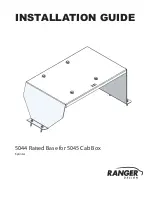
NOTE:
•
Air bag covers may not be obvious in the interior
trim, but they will open during air bag deployment.
•
After any collision, the vehicle should be taken to an
authorized dealer immediately.
Enhanced Accident Response System
In the event of an impact, if the communication net-
work remains intact, and the power remains intact,
depending on the nature of the event, the Occupant
Restraint Controller (ORC) will determine whether to
have the Enhanced Accident Response System perform
the following functions:
•
Cut off fuel to the engine (if equipped)
•
Cut off battery power to the electric motor
(if equipped)
•
Flash hazard lights as long as the battery has power
•
Turn on the interior lights, which remain on as long
as the battery has power or for 15 minutes from the
intervention of the Enhanced Accident Response
System
•
Unlock the power door locks
Your vehicle may also be designed to perform any of
these other functions in response to the Enhanced Acci-
dent Response System:
•
Turn off the Fuel Filter Heater, Turn off the HVAC
Blower Motor, Close the HVAC Circulation Door
•
Cut off battery power to the:
○
Engine
○
Electric Motor (if equipped)
○
Electric power steering
○
Brake booster
○
Electric park brake
○
Automatic transmission gear selector
○
Horn
○
Front wiper
○
Headlamp washer pump
NOTE:
After an accident, remember to cycle the ignition to the
STOP (OFF/LOCK) position and remove the key from the
ignition switch to avoid draining the battery. Carefully
check the vehicle for fuel leaks in the engine compart-
ment and on the ground near the engine compartment
and fuel tank before resetting the system and starting
the engine. If there are no fuel leaks or damage to the
vehicle electrical devices (e.g. headlights) after an acci-
dent, reset the system by following the procedure
described below. If you have any doubt, contact an
authorized dealer.
Enhanced Accident Response System
Reset Procedure
In order to reset the Enhanced Accident Response Sys-
tem functions after an event, the ignition switch must
be changed from ignition START or ON/RUN to ignition
OFF. Carefully check the vehicle for fuel leaks in the
engine compartment and on the ground near the
engine compartment and fuel tank before resetting the
system and starting the engine.
Maintaining Your Air Bag System
WARNING!
•
Modifications to any part of the air bag system
could cause it to fail when you need it. You could
be injured if the air bag system is not there to pro-
tect you. Do not modify the components or wiring,
including adding any kind of badges or stickers to
(Continued)
WARNING!
the steering wheel hub trim cover or the upper pas-
senger side of the instrument panel. Do not modify
the front bumper, vehicle body structure, or add
aftermarket side steps or running boards.
•
It is dangerous to try to repair any part of the air
bag system yourself. Be sure to tell anyone who
works on your vehicle that it has an air bag system.
•
Do not attempt to modify any part of your air bag
system. The air bag may inflate accidentally or may
not function properly if modifications are made.
Take your vehicle to an authorized dealer for any
air bag system service. If your seat, including your
trim cover and cushion, needs to be serviced in
any way (including removal or loosening/tightening
of seat attachment bolts), take the vehicle to an
authorized dealer. Only manufacturer approved
seat accessories may be used. If it is necessary to
modify the air bag system for persons with disabili-
ties, contact an authorized dealer.
Event Data Recorder (EDR)
This vehicle is equipped with an event data recorder
(EDR). The main purpose of an EDR is to record, in cer-
tain crash or near crash-like situations, such as an air
bag deployment or hitting a road obstacle, data that will
assist in understanding how a vehicle’s systems per-
formed. The EDR is designed to record data related to
vehicle dynamics and safety systems for a short period
of time, typically 30 seconds or less. The EDR in this
vehicle is designed to record such data as:
•
How various systems in your vehicle were operating;
•
Whether or not the driver and passenger safety
belts were buckled/fastened;
SAFETY
143
4
















































